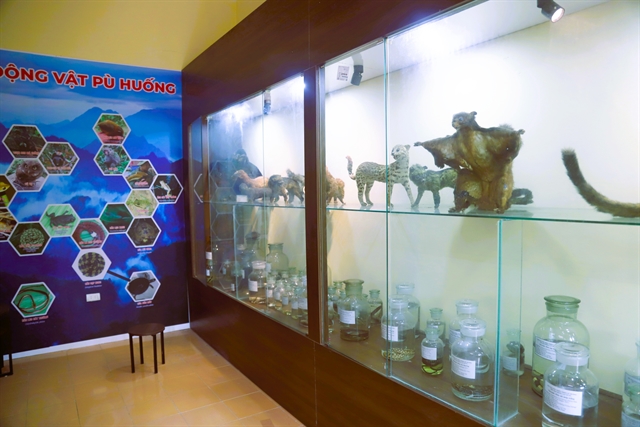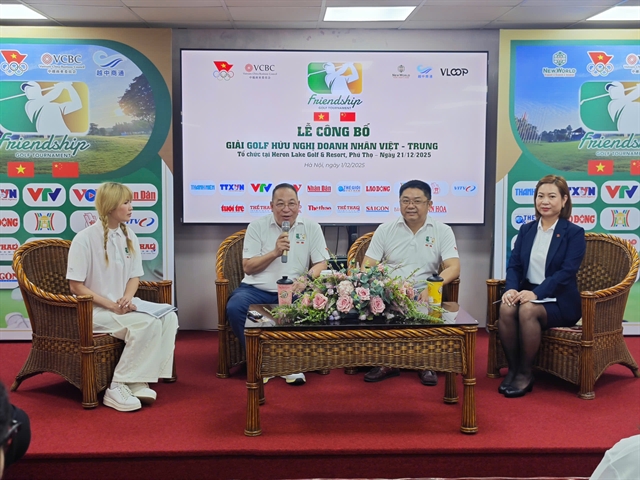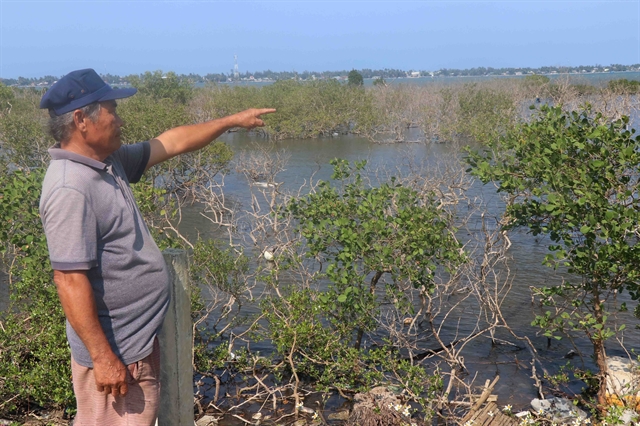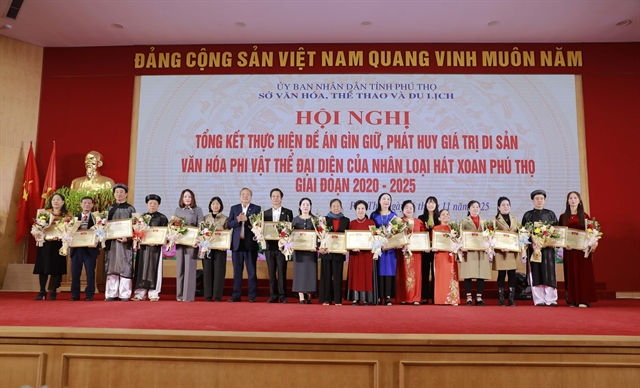 Environment
Environment

 |
| A corner of a mangrove forest in Tam Giang Commune, Núi Thành District in the coastal central province of Quảng Nam.—VNA/VNS File Photo Hữu Trung |
QUẢNG NAM — Local residents of Núi Thành District in the coastal central province of Quảng Nam have been actively engaged in planting mangrove forests to sustain their livelihoods and combat erosion, while protecting the environment.
While awaiting plans from relevant authorities to restore the areas of forest that have perished in Tam Giang Commune, the local community has taken the issue into their own hands.
Deputy Chairman of the People's Committee of the commune, Nguyễn Ngọc Vinh, said that mangrove forests were especially beneficial to local residents during the rainy season, providing a year-round source of livelihood for the community.
In response to the recent die off of mangrove trees, local authorities had reported the situation to higher-level agencies for investigation and evaluation to determine the causes behind the death of over five hectares of mangroves, out of more than 25ha in the area.
Nguyễn Ngọc Chính, a resident of Đông Xuân Village in the commune said the expansive mangrove forests flanking the Trường Giang River and coastal mudflats served as habitats for economically valuable aquatic species, including blood clams, conchs, scallops, crabs and various fish.
That was a vital source of income for the residents of both Tam Quang and Tam Giang communes in the district. Therefore, the protection and expansion of mangrove areas had become a communal commitment, he said.
Recently, many mangrove forests in Tam Giang Commune suffered mass die offs. The loss of these mangroves not only compromised wind and storm protection, but also threatened the aquatic environment.
“Thus, while awaiting assessments from authorities regarding the causes of mangrove loss, the community banded together to restore the affected areas in their own way,” he added.
To rejuvenate the mangrove forests, residents of Tam Giang Commune adopted methods from the nearby communes of Tam Quang and Tam Hải.
Seedlings of mangrove species were nurtured in soil balls and planted during low tide.
Before planting, the plastic coverings of the soil balls were removed and the roots were firmly secured with mud and staked to prevent wind damage.
Chính also said that mangroves had rapidly growing root systems, which could anchor deeply within a year of planting, fostering swift development.
Once mature, the intertwining roots and branches created a strong network.
“With adequate funding for planting and maintenance, the revival of mangrove forests is entirely feasible,” he said.
Erosion control
Facing Tam Giang Commune is Tam Hải Commune, an island surrounded by the Trường Giang River and the sea.
Local residents have identified mangrove planting as a consistent effort to prevent riverbank and coastal erosion alongside ongoing construction of reinforced concrete embankments around the island.
Huỳnh Ngọc Đức, a resident of Long Thạnh Tây Village in Tam Hải Commune, said when the local administration launched a mangrove planting and protection programme, villagers enthusiastically participated.
This year, he personally planted over 500 seedlings, contributing to more than one hectare of new mangroves for the village.
According to Đức, the mangroves along the river and near the coastline provided habitats for brackish-water species such as conchs, scallops, shrimp, crabs and various fish.
In the village, dozens of families, without the means to engage in long-term sea fishing, had gained daily incomes exceeding VNĐ200,000 (US$8) through harvesting seafood from the mangrove forest.
Chairman of the People's Committee of the commune, Nguyễn Tấn Hùng, said the programme for planting mangroves and casuarinas on sandy slopes had been in place for decades to combat the increasing encroachment of seawater due to high tides.
The commune established teams for planting and protecting forests within each village, directly involving the community in order to implement the planting and restoration programme.
They discussed and created regulations for planting and safeguarding the forests.
Each village set annual planting targets, viewing that as a key criterion for assessing community competitiveness, he said.
The community recognised the benefits of mangrove planting, resulting in over 65ha of mangrove forest planted in the commune, including more than 22ha of newly-planted areas.
Additionally, previously-uncontrolled shrimp farming areas were now transformed into lush casuarina forests, providing wind and sand protection during storms while serving as the green lungs for the island community, he said.
After more than a decade of dedicated protection and replanting efforts, the mangrove forests in the commune now constituted nearly two-thirds of the total mangrove area in the district.
The model of planting, protecting and nurturing mangroves to safeguard the environment and create sustainable livelihoods would continue to be promoted in the district.
Vice Chairman of the People’s Committee of the district Ngô Đức An said the mangrove forests in the district exceeded 100ha, mainly in the communes of Tam Giang, Tam Quang, Tam Hải and Tam Tiến.
The mangrove forests played a crucial role in preventing erosion, controlling sand drift and providing vital resources for local communities. — VNS



 Ảnh JP Morgan.png)
